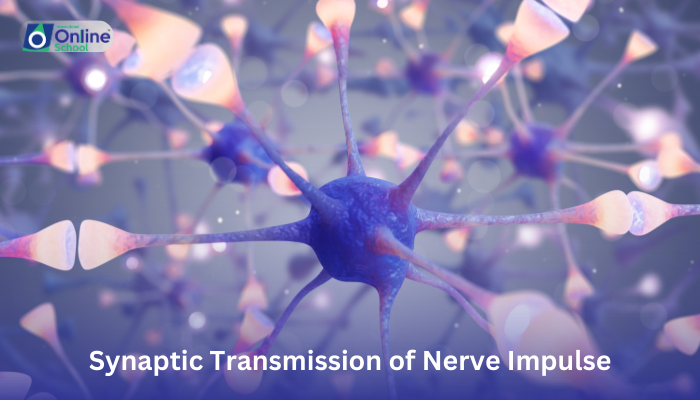
Learning Outcomes:
i. Describe the sequence of events that occur at the synapse during nerve impulse transmission.
ii. Explain the role of neurotransmitters in synaptic communication.
iii. Understand the factors influencing the success or failure of synaptic transmission.
Introduction:
Imagine a relay race, not of runners, but of electrical signals. This is the essence of synaptic transmission, the vital handoff between neurons that allows information to flow through the nervous system. In this lesson, we'll zoom in on this microscopic relay station, the synapse, and witness the fascinating dance of chemicals and electricity that keeps the message moving.
i. The Spark Arrives: Action Potential at the Presynaptic Terminal
The journey begins with a spark called the action potential reaching the presynaptic terminal. This electrical surge triggers the release of tiny packages called synaptic vesicles, each containing chemical messengers known as neurotransmitters. Imagine these vesicles as tiny rockets, loaded with information and ready for launch.
ii. Crossing the Canyon: Neurotransmitters Bridge the Synaptic Cleft
The vesicles burst open, releasing the neurotransmitters into the synaptic cleft, a tiny gap between the presynaptic and postsynaptic neurons. Think of this gap as a canyon that the message needs to cross to reach its destination.
iii. The Chemical Handoff: Neurotransmitters Bind to Receptors
The neurotransmitters, like skilled climbers, navigate the cleft and bind to specific receptors on the postsynaptic terminal. Imagine these receptors as docking stations, waiting for the right key to unlock their potential.
iv. The Signal Amplification: From Chemical to Electrical
Once docked, the neurotransmitters trigger a change in the electrical state of the postsynaptic terminal. This change, like a spark igniting a fire, can trigger a new action potential in the receiving neuron, sending the information on its way. Imagine this as a power plant amplifying the whisper into a roar, ready to be transmitted further.
v. Not Always a Sure Shot: Factors Affecting Transmission Success
Not every chemical handoff is successful. The amount of neurotransmitters released, the number of available receptors, and the presence of other molecules can all influence whether the postsynaptic neuron generates an action potential or not. Imagine the relay race being affected by wind, fatigue, or even rival runners.
vi. The End of the Relay: Recycling and Rebooting
Once the neurotransmitter has done its job, it's either reabsorbed by the presynaptic terminal or broken down by enzymes in the cleft. The receptors return to their resting state, ready for the next chemical handoff. Imagine the rockets returning to base, refueled and ready for the next race.
The synapse is not just a simple gap; it's a complex dance floor where electrical whispers transform into chemical messages, where information is amplified and relayed, and where the success of each handoff determines the flow of communication throughout the nervous system. By understanding the intricate choreography of synaptic transmission, we gain a deeper appreciation for the remarkable efficiency and flexibility of this microscopic relay station, the silent conductor of our thoughts, movements, and experiences.